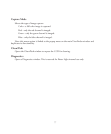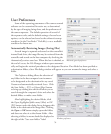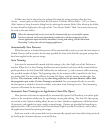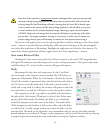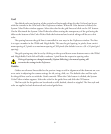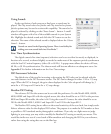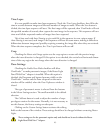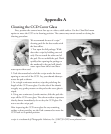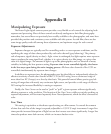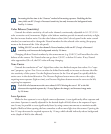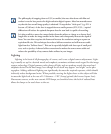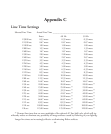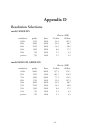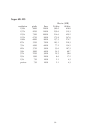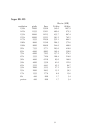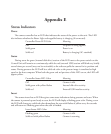85
Appendix B
Manipulating Exposure
e Better Light digital camera system provides a very flexible set of controls for adjusting both
exposure and processing. Most of these controls are directly analogous to their film photography
namesakes, but several have not previously been readily available to the photographer, and none have
provided the precision and consistency now available with this system. As with film, there are also
some image quality trade-offs among these adjustments, and optimum ranges for each control.
Exposure Adjustments
Exposure changes are typically used for controlling under- or over-exposure conditions, and for
equalizing the range of data values produced by each color channel (gray balancing). e primary
rule of exposure, signal (density or data) = light x time is unchanged; less light requires more exposure
time to produce the same signal level, whether it is a given density in a film image, or a given data
value in a digital image. e amount of light is up to the photographer, and is a function of many
variables, including the lens aperture setting. Exposure time is now controlled digitally; the shutter
in the lens stays open during the entire imaging process. All three color channels of the CCD are
controlled simultaneously by exposure time changes.
In addition to exposure time, the photographer now has the ability to independently adjust the
effective sensitivity of each color channel of the CCD (its ISO rating) over a continuous range of
more than four EV (f-stops), on a shot-by-shot basis. is powerful control allows precise gray bal
-
ancing of image data with nearly any continuous light source, and provides a wide range of effective
ISO settings for increased flexibility in setting an exposure.
Finally, the Tone Curves can be used to “push” or “pull” a given exposure without significantly
affecting contrast or color rendition. is function of the Tone Curves, while not strictly speaking an
exposure adjustment, will be treated separately from Tone adjustments, which do affect contrast and
color.
Line Time
is setting is equivalent to the shutter speed setting on a film camera. It controls the amount
of time that each line of the image is exposed; adjustable in 1/3 EV (f-stop) increments. Longer line
times provide increased absorption of light but can also increase scan times significantly. Longer line
times also produce more dark current, which can increase shadow noise.



